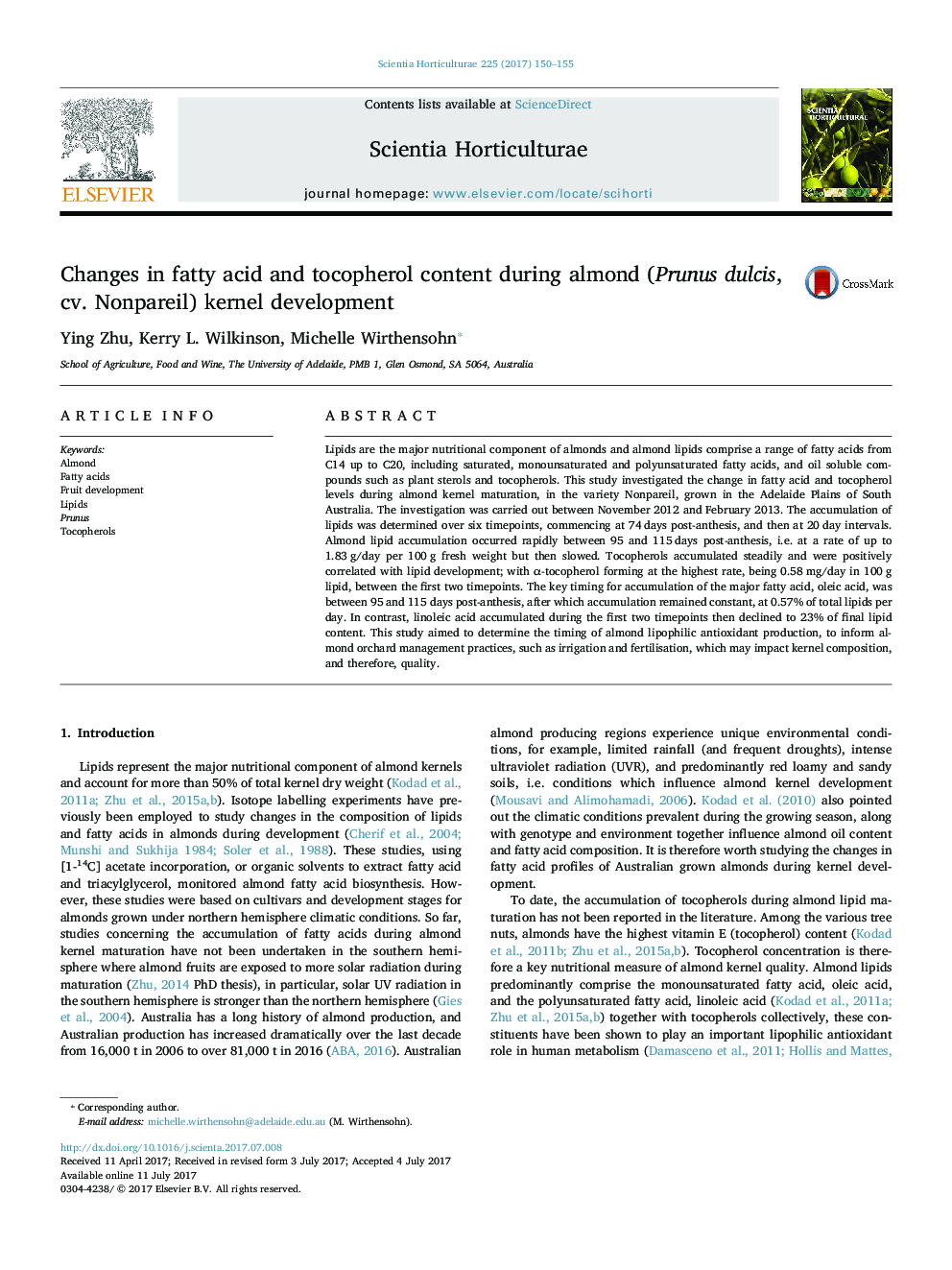| کد مقاله | کد نشریه | سال انتشار | مقاله انگلیسی | نسخه تمام متن |
|---|---|---|---|---|
| 5769251 | 1628773 | 2017 | 6 صفحه PDF | دانلود رایگان |

- Almond oil accumulation develops rapidly from 95 to 115Â days post-anthesis.
- α-Tocopherol is the major tocol in almond oil throughout kernel development.
- Highest rate of accumulation of α-tocopherol is between 74 to 95 days post-anthesis.
- Oleic acid accumulation rate was greatest between 95 and 115Â days post-anthesis.
Lipids are the major nutritional component of almonds and almond lipids comprise a range of fatty acids from C14 up to C20, including saturated, monounsaturated and polyunsaturated fatty acids, and oil soluble compounds such as plant sterols and tocopherols. This study investigated the change in fatty acid and tocopherol levels during almond kernel maturation, in the variety Nonpareil, grown in the Adelaide Plains of South Australia. The investigation was carried out between November 2012 and February 2013. The accumulation of lipids was determined over six timepoints, commencing at 74 days post-anthesis, and then at 20 day intervals. Almond lipid accumulation occurred rapidly between 95 and 115 days post-anthesis, i.e. at a rate of up to 1.83 g/day per 100 g fresh weight but then slowed. Tocopherols accumulated steadily and were positively correlated with lipid development; with α-tocopherol forming at the highest rate, being 0.58 mg/day in 100 g lipid, between the first two timepoints. The key timing for accumulation of the major fatty acid, oleic acid, was between 95 and 115 days post-anthesis, after which accumulation remained constant, at 0.57% of total lipids per day. In contrast, linoleic acid accumulated during the first two timepoints then declined to 23% of final lipid content. This study aimed to determine the timing of almond lipophilic antioxidant production, to inform almond orchard management practices, such as irrigation and fertilisation, which may impact kernel composition, and therefore, quality.
Journal: Scientia Horticulturae - Volume 225, 18 November 2017, Pages 150-155